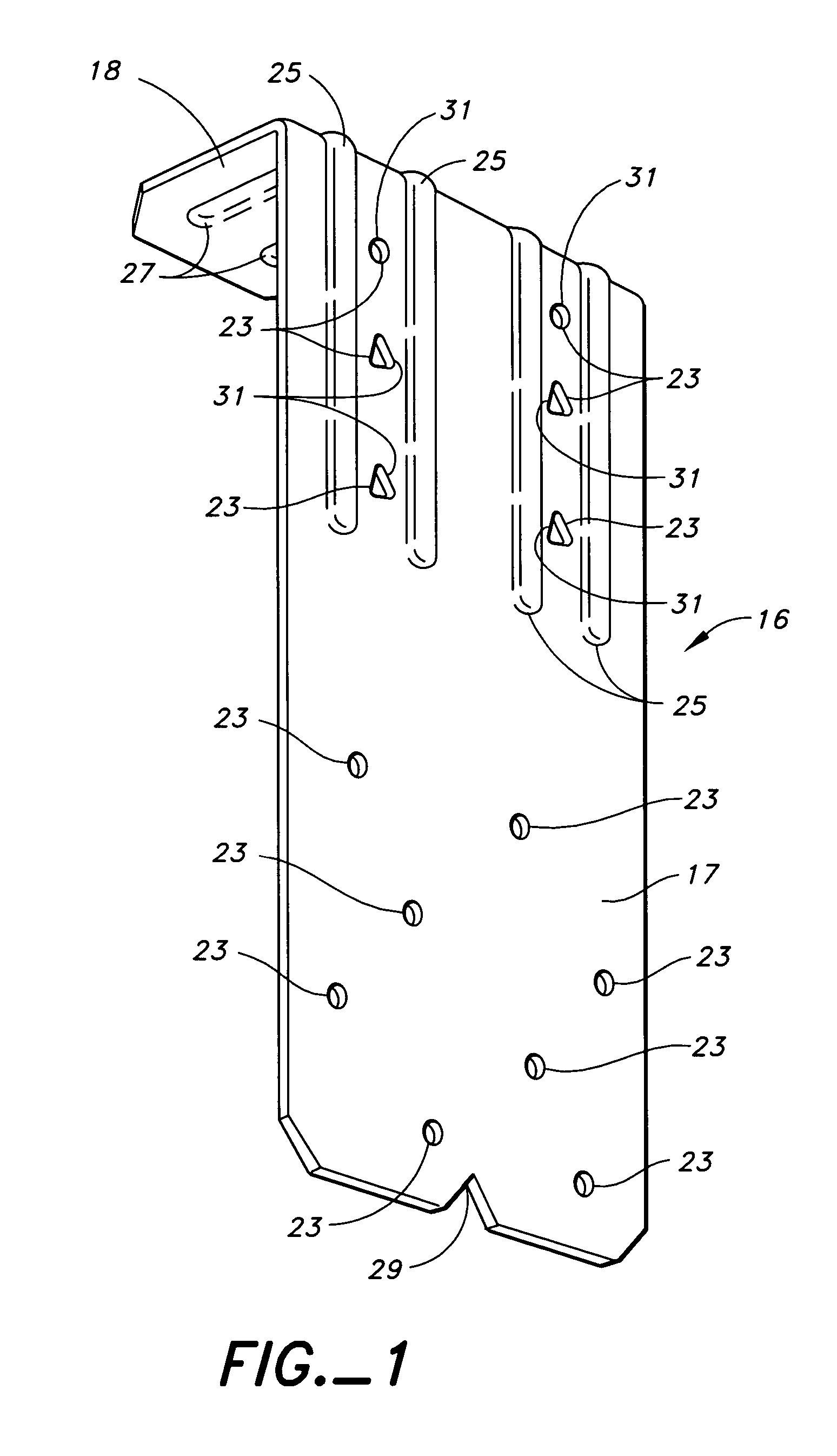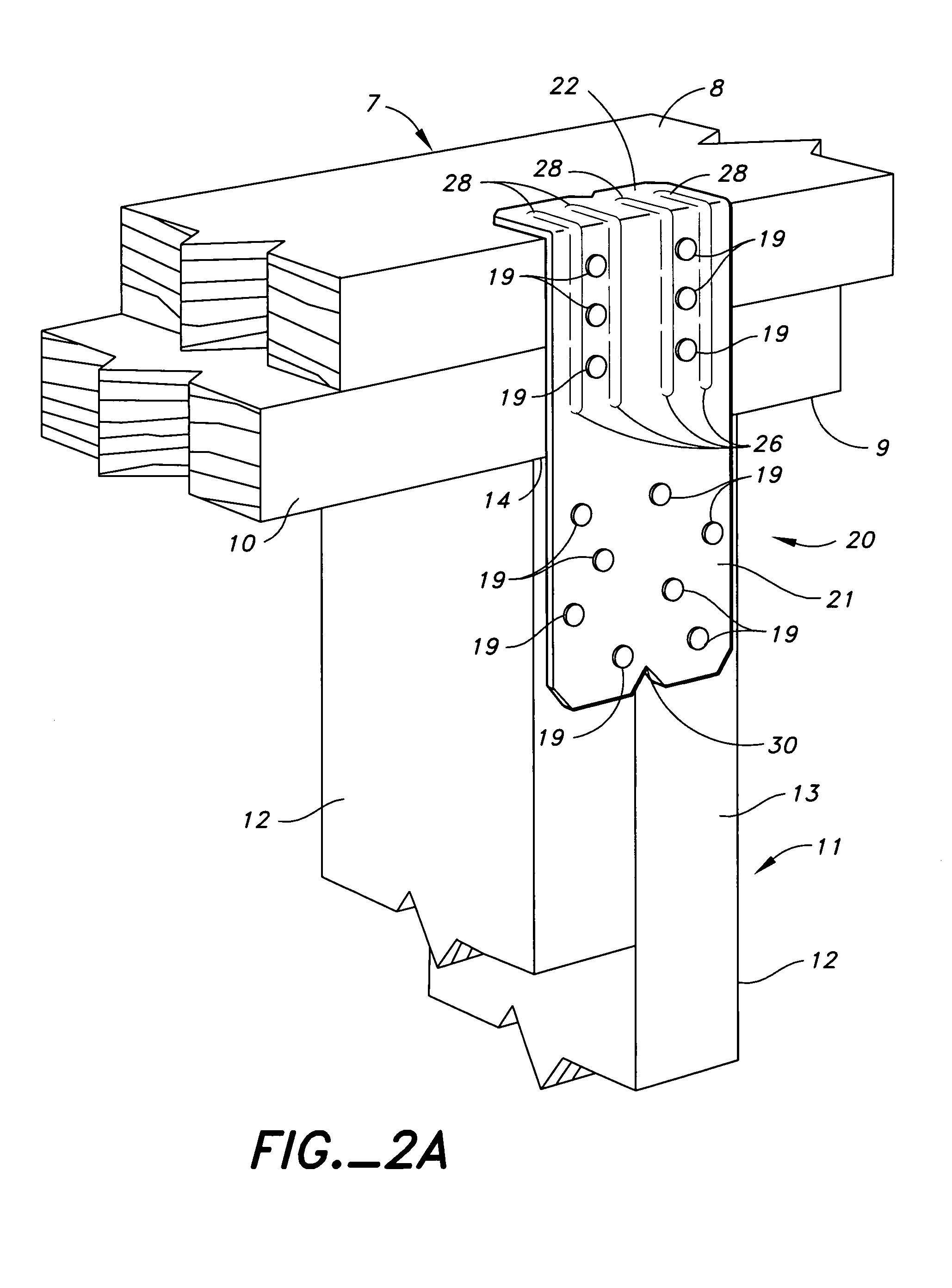Top flange stud to plate tie
a technology of flange studs and ties, which is applied in the direction of rod connections, girders, manufacturing tools, etc., can solve the problems of insufficient uplift resistance of toe nailing, insufficient indexing of metal connectors for both single and double plates with the same part of the connector, and inability to provide tension resistance in addition, so as to achieve easy use and installation, and resist greater uplift loads
- Summary
- Abstract
- Description
- Claims
- Application Information
AI Technical Summary
Benefits of technology
Problems solved by technology
Method used
Image
Examples
Embodiment Construction
[0029]As best seen in FIG. 3, FIG. 12, FIG. 17 and FIG. 18, the present invention is a stud to plate tie connection 1 in a wood frame structure 2. The connection comprises a base plate 3, a top plate 7, an elongated stud 11, a first stud to plate tie connector 16, and a second stud to plate tie connector 20. The base plate 3, top plate 7 and elongated stud 11 are all typically nominal 2×4 wood members. Most typically, the base plate 3 is a single width, while the top plate 7 is typically a double width. The stud 11 is typically either a single 2×4 or a double 2×4, although triple ply or greater are also possible. These structural members could also be a material other than wood, such as steel. The base plate 3 has an upper face 4, a lower face 5, and an edge face 6. The top plate 7 has an upper face 8, a lower face 9, and an edge face 10. The elongated stud 11 has sides 12 and an edge face 13 therebetween and has an upper end 14 in abutting registration with the lower face 9 of the ...
PUM
 Login to View More
Login to View More Abstract
Description
Claims
Application Information
 Login to View More
Login to View More - R&D
- Intellectual Property
- Life Sciences
- Materials
- Tech Scout
- Unparalleled Data Quality
- Higher Quality Content
- 60% Fewer Hallucinations
Browse by: Latest US Patents, China's latest patents, Technical Efficacy Thesaurus, Application Domain, Technology Topic, Popular Technical Reports.
© 2025 PatSnap. All rights reserved.Legal|Privacy policy|Modern Slavery Act Transparency Statement|Sitemap|About US| Contact US: help@patsnap.com



